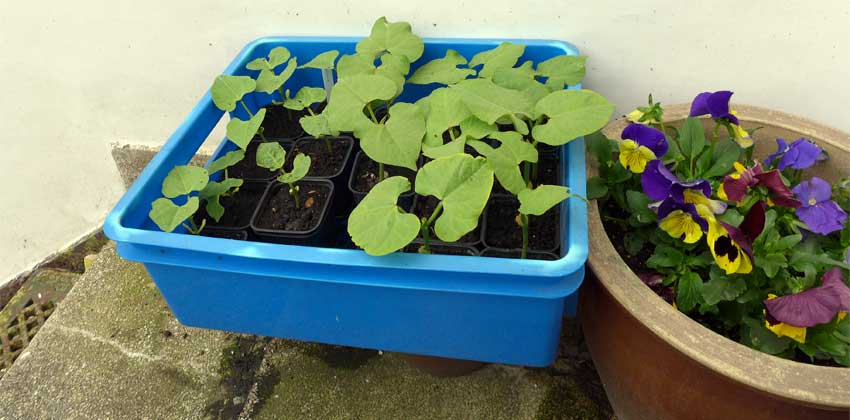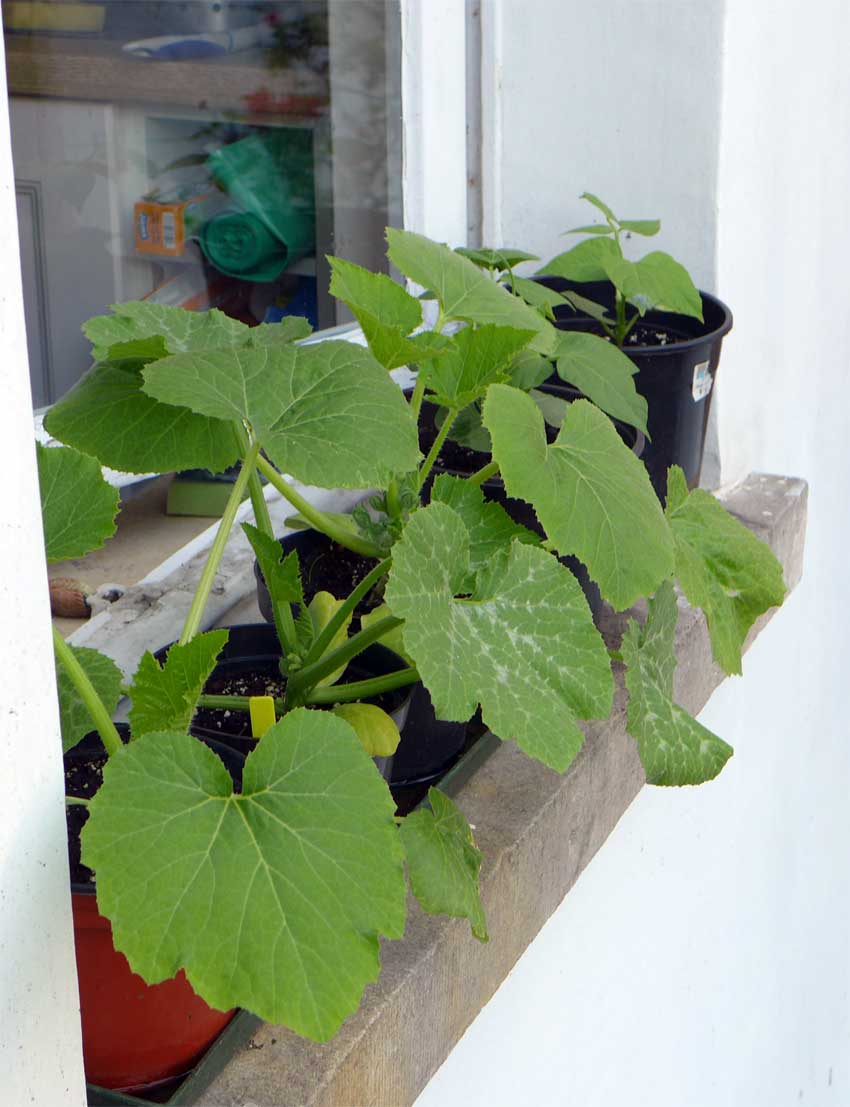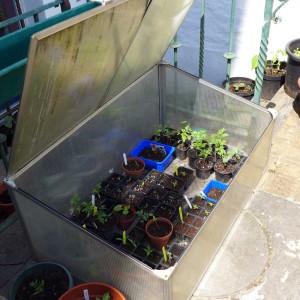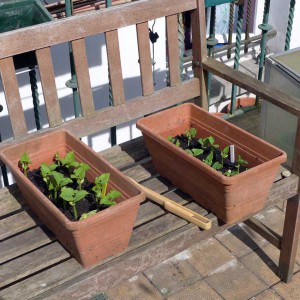
The process of moving seedlings from the warmth and protection of the house or greenhouse outdoors into the garden is called “hardening off.” This most delicate time in plant growth, following weeks of careful nurturing of small plants from seed, leaves the gardener at the mercy of outdoor elements often unpredictable and fast changing. While getting an early start to the vegetable garden is essential for a good season, getting caught by a sudden cold snap can destroy most tender seedlings.
Older people (myself included) often refer nostalgically to past times where winters drew to a close and the first days of spring were clearly noticeable. The seasons progressed in a regular fashion and afforded clear planting times and dates for the gardener. Unfortunately, the consensus among scientists studying climate change is that the disruptions in what have been considered normal patterns of seasonal temperature and precipitation set in motion by the build-up of greenhouse gases are now permanent and something we will have to learn to live with.
For the simple gardener, climate change does not mean warmer weather or cooler weather, but more fragmented and confused seasons and un-seasonal weather events. A blurring of the lines between winter and spring means the process of hardening off which before may have taken several weeks can now stretch over two months.
House conditions
The hardening off process is all about the waxy cuticle that protects the plant’s leaf surfaces from desiccation via excessive sunshine and wind. This cuticle is part of the ‘skin’ of the plant, a layer of waxy material deposited by the outer cells that cover every bit of a plant creating a barrier between the plant and its environment. This layer cannot form completely under house conditions or in a greenhouse and can only really form and harden off through gentle exposure to the outdoor elements. The waxy cuticle of the plant is produced in reaction to the environment around the plant.
Once seeds have germinated the hardening off process is inherent to the seedlings growth. Under house conditions seedlings will grow somewhat broader leaves than ones out in the open and will have a thinner cuticle which is less able to protect the seedling from dehydration. The warm moist conditions that germinate the seeds and encourage early growth must gently be adapted over several weeks to enable a thicker cuticle to develop.
Seedlings are the products of thousands of intricate biochemical reactions which set the rate of the seedling’s growth, essential to which are light and temperature. Increased temperature can increase growth while cold can slow growth down or stop it altogether. Light exposure can over-encourage growth creating spindly plants while under exposure creates sickly weak plants. The hardening off process indoors requires a gentle manipulation of these conditions to neither under-grow nor over-grow the seedlings.
The constant buffering from the weather makes a plant grow differently, producing cuticle cells that are shorter and stockier, with thicker walls that are not so easily broken or damaged. This is hard to replicate indoors but can at least be encouraged through mechanical stimulation (gentle brushing of seedlings with hand or duster) or by increased airflow around plants (even a light flow of air from an electric fan).
The hardening off process indoors requires careful observation of conditions in different areas, moving seedlings around accordingly, watching their progress and generally encouraging small sturdy plants to grow. The latter stage in this process should slow plant growth, causing the plants to store more food internally and increase the thickness of their outer leaf layers.
Moving outdoors
The progression of seedlings from the controlled environment of a seed incubator, possibly under lights to the great outdoors should involve as many intermediate stages as can be devised around the house. Window sills, conservatories, porches, cool rooms can all be used as intermediate steps before finally placing the seedlings outside. First visits outside should be for a few hours of afternoon sun with the seedlings protected from any wind or rain. Caution and patience are essential here.
Plants raised indoors or in a greenhouse need to be acclimatised to the cooler temperatures, lower humidity and increased air movement outdoors. The major danger at this stage is from sudden changes in temperature and even wind chill on brighter days. Any sudden chill can kill of seedlings very quickly.
“Setting the plant back,” is a gardener’s term for chill damage which may not kill the plant but will seriously damage it and prevent it from fully developing. While plants will adapt to a cooler temperature, hardening off, the process is slow and cannot handle sudden changes.
Gardeners have always been aware of the phenomenon known as “a false spring,” an unusually early arrival of warm weather at the start of the year, often followed by sudden cold. However, unusually early warming is becoming increasingly common as climate changes, especially with the warm spell being followed abruptly by a hard freeze or sudden chill.
This false spring can work well for the gardener putting seedlings out for a few hours every day but this “warm growth” can create a weak plant all the more vulnerable to any sudden temperature drop later. The temptation to plant seedlings out into final beds during a prolonged false spring is better avoided as young plants can be deceptively weak and tender.

After an initial stage of limited daily exposure the time comes for the plants first overnight outing. If this can be done in a cold frame or under glass all the better. A sheltered spot out of the wind is a must. The sudden cold snaps that can occur after a false spring are most devastating at this time. Plants which have successfully managed many nights outdoor can be destroyed by one night’s sudden temperature drop.
Once these hurdles are overcome the batches of young plants move into their final stage before planting out. As they become accustomed to strong sunlight and cool nights watering should be steadily reduced to encourage final hardening. The young plants respond to this reduction in watering by toughening the cuticle layer to retard water loss. This has to be managed carefully – watch for wilting – as outdoor conditions can dry out plants quickly.
Finally, the young plants are ready for planting out. For the slugs in the garden, fresh from hibernation and hungry, it is feast time. In a small garden with an active snail population the only option is to prolong the hardening off phase by several weeks, potting up small plants to larger pots, allowing the plants time to grow and harden off their cuticle surface. This is necessary with tomatoes, beans and cucumbers (the slugs favourite).

